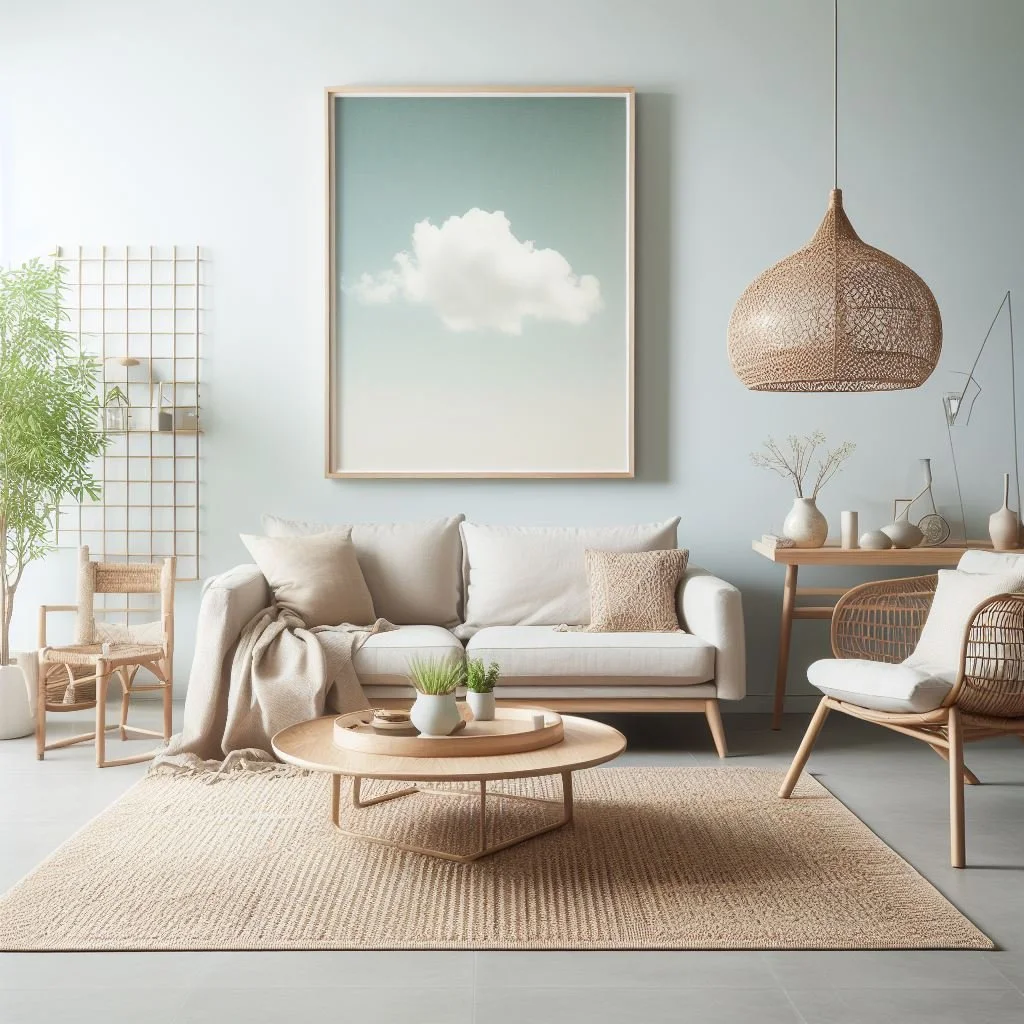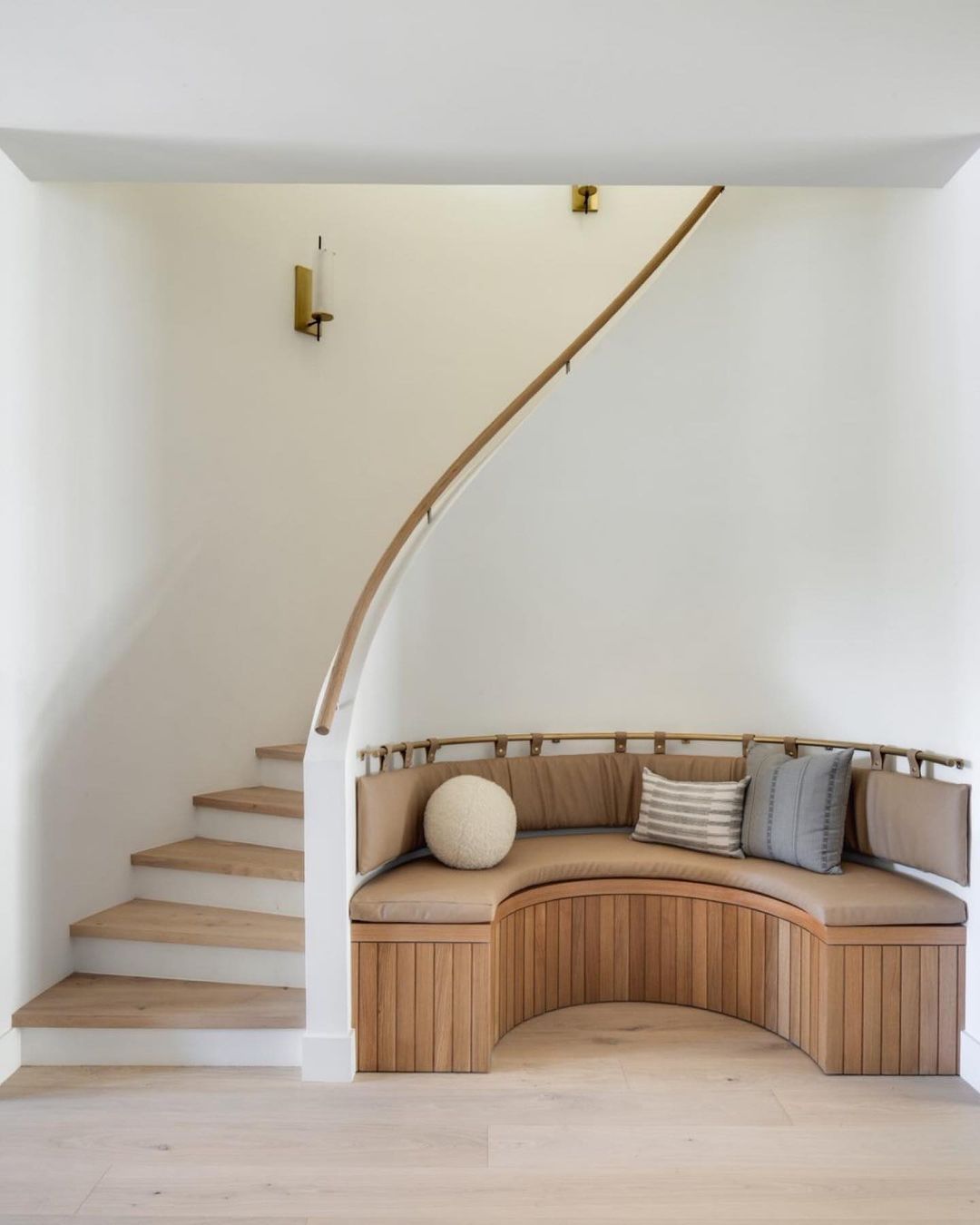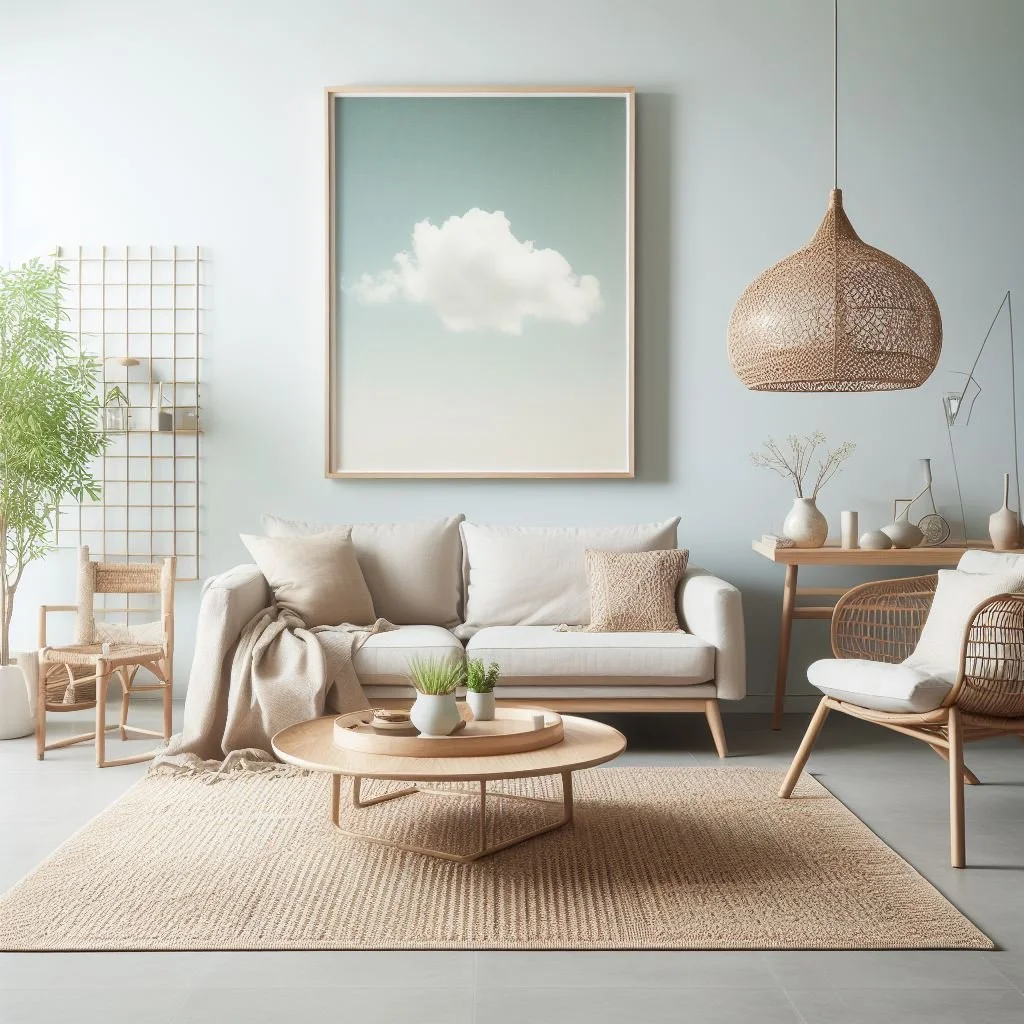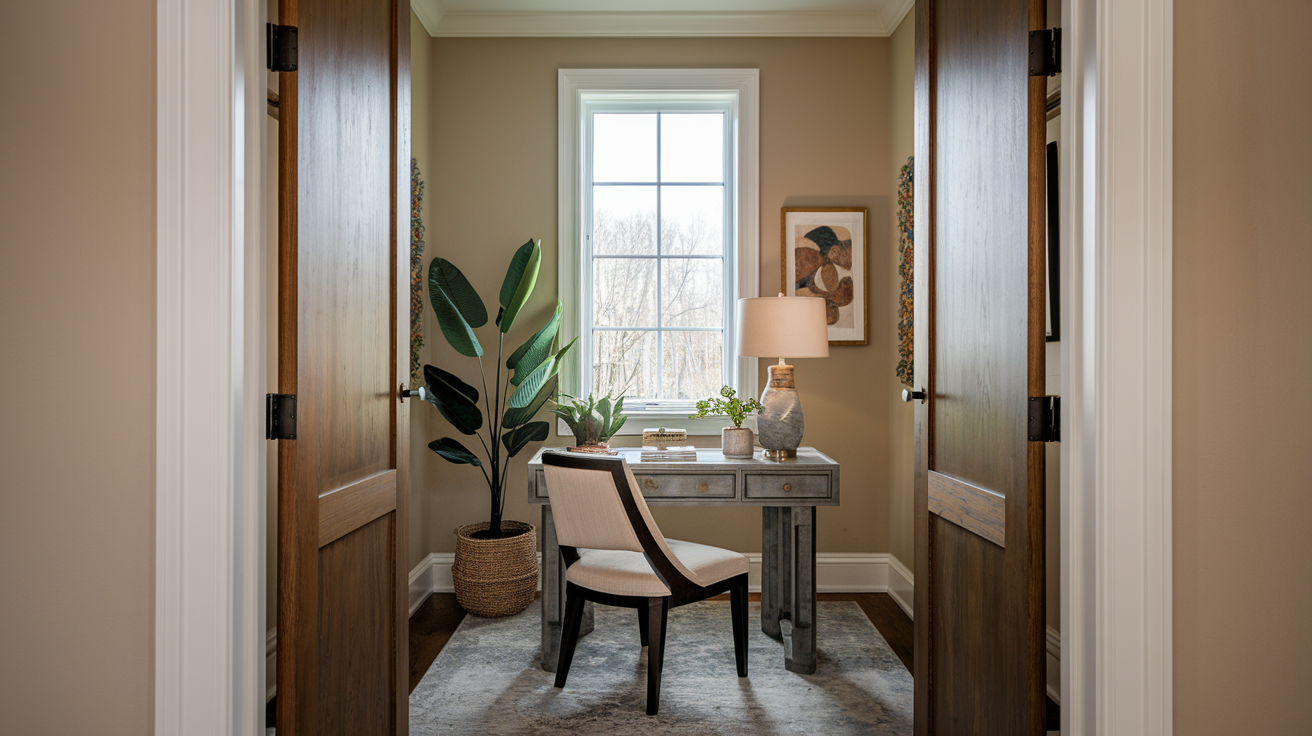The Impact of Minimalism on Mental Health: Interior Design as a Tool for Stress Reduction

Understanding the Essence of Minimalism in Design
In a fast-paced world, where distractions are rampant, the quest for tranquility often leads to the exploration of minimalism. This design philosophy is not just a trend; it represents a profound shift towards creating spaces that promote mental well-being. As individuals navigate the complexities of modern living, embracing a minimalistic approach becomes increasingly relevant, offering a refuge from the chaos of daily life.
Minimalism focuses on the essentials. By eliminating excess clutter, it aims to enhance the environment and mental clarity. Central to this concept are several key features of minimalist design:
- Open spaces that allow for freedom of movement, fostering an uncluttered environment that encourages relaxation.
- Neutral color palettes that evoke serenity, with shades like soft whites, beiges, and grays creating a calming backdrop.
- Multi-functional furniture that maximizes utility, such as sofa beds or extendable dining tables, ensuring that every piece serves a purpose.
Research shows that our surroundings directly affect our mental health. A simplified environment can lead to:
- Reduced anxiety levels, as a tidy space often translates to a tidy mind.
- Improved focus and productivity, enabling individuals to concentrate better on tasks without the distraction of clutter.
- Increased feelings of peace and comfort, creating a space where one can recharge and unwind.
Moreover, studies have demonstrated that individuals living in minimalist environments report greater life satisfaction. For instance, a survey by the National Institute of Mental Health revealed that participants who adopted minimalistic practices experienced a notable decrease in stress-related symptoms. Adopting a minimalist approach to interior design isn’t just about aesthetics; it’s a powerful tool for stress reduction. As individuals seek healthier lifestyles, understanding this relationship becomes crucial. The rise of decluttering experts and movements like “The KonMari Method” further illustrates a nationwide trend towards simplifying life.
Join us as we delve deeper into how embracing minimalism can transform not just your living space, but also your state of mind. From practical tips on decluttering to suggested minimalist designs for various rooms in your home, the journey toward simplicity and calm is enlightening and rewarding. For those who feel overwhelmed by the noise of their surroundings, minimalism may just be the answer to unlocking a more peaceful, fulfilling life.

DIVE DEEPER: Click here to uncover more tips
The Psychological Benefits of a Minimalist Environment
Embracing minimalism in interior design goes beyond mere aesthetics; it has profound implications for mental health. A decluttered and thoughtfully curated space can serve as a balm for the overstimulated psyche. The design choices made within a home can create an environment conducive to stress reduction and psychological comfort. The question arises: how does a minimalist approach benefit our mental health?
One significant aspect of minimalism is the concept of control. In a world where omnipresent distractions compete for our attention, having a clear, organized space can empower individuals. When a room is designed with simplicity, it eliminates the mental chaos often associated with clutter. This control over one’s environment can lead to a feeling of mastery and purpose, fostering a greater sense of well-being. A study published in the journal “Psychological Science” backs this, indicating that individuals in well-organized environments show decreased levels of anxiety and improved cognitive performance.
Furthermore, minimalist designs encourage mindfulness, a practice that has gained traction in addressing mental health challenges. [Mindfulness](https://www.mindful.org/) emphasizes being present in the moment, which can be substantially enhanced within minimalist spaces that prioritize tranquility. When the surroundings are stripped of distractions, individuals can focus on their thoughts and feelings, facilitating personal reflection and emotional processing. Below are some key elements of how minimalism aids in cultivating mindfulness:
- Intentional Design: Each piece of furniture or decor serves a purpose, inviting thoughtful interaction.
- Nature Integration: Minimalism often incorporates natural elements, which can enhance feelings of calm and connection to the environment.
- Reduced Sensory Overload: A simpler space minimizes visual and auditory distractions, allowing for deeper relaxation.
In addition to fostering mindfulness, minimalist environments can also encourage social connections. With fewer distractions, individuals are more inclined to engage with family and friends, fostering better communication and deeper relationships. Research shows that strong social connections play a vital role in mental health, as they provide essential support structures during challenging times.
As the discourse surrounding minimalism grows, furniture brands and interior designers have begun to recognize the importance of creating spaces that nurture mental health. The incorporation of biophilic design, which emphasizes natural light and green elements, has gained popularity as it aligns with minimalist principles while catering to mental well-being. By choosing designs and furnishings that promote relaxation and connection, individuals may indeed find themselves at the intersection of aesthetics and psychological benefit.
In the quest for emotional well-being, understanding how interior design impacts mental health through minimalism is invaluable. As we pivot forward, the integration of these concepts into our homes may well serve as a preventive measure against the degradation of mental health often associated with modern living.
The Influence of Minimalist Design on Mental Well-Being
Minimalism in interior design flourishes not just as an aesthetic choice but significantly influences mental health. Research indicates that living in spaces filled with excessive clutter can contribute to increased levels of stress and anxiety. In contrast, minimalist design principles promote clarity and a sense of peace within the home environment. By reducing distractions, individuals can focus better and experience improved cognitive function.
Furthermore, minimalist spaces encourage a more mindful approach to living. By embracing the essentials and discarding non-functional pieces, individuals can create environments that foster tranquility. For example, open floor plans that emphasize light and airiness allow for easier movement and contribute to an overall feeling of freedom. Such layouts help mitigate the feeling of confinement often associated with more cluttered environments.
The color palette in minimalist designs typically favors soft, neutral tones, which can have a calming effect on the mind. The psychological impact of color is profound; hues like soft blues and greens evoke feelings of serenity, helping to lower heart rates and decrease stress levels. Moreover, incorporating natural elements through plants can enhance well-being by improving indoor air quality and providing a connection to nature, reinforcing a sense of calm.
Practical Applications of Minimalism
Implementing minimalist design as a stress-reduction tool involves practical strategies that anyone can adopt. Decluttering once a week can transform spaces and promote a greater feeling of control. It’s not just about removing unnecessary items; it’s about curating a serene atmosphere that supports mental clarity. Moreover, choosing just a few well-made, meaningful decorative items can provide personal joy without overwhelming the senses.
| Category | Description |
|---|---|
| Reduced Clutter | Minimizing physical items can lead to a clear mind and reduced stress. |
| Mindful Living | Encourages consideration of what truly matters, promoting mental clarity. |
DISCOVER MORE: Click here to learn about the impact of minimalism on your space</a
Enhancing Well-Being Through Functional Spaces
The power of minimalism in interior design also lies in its ability to foster functional spaces that cater to specific needs. This deliberate approach means that every element serves a distinct purpose, promoting not only aesthetic simplicity but also enhancing the functionality of a living environment. As more individuals seek to strike a balance between their personal and professional lives, well-designed minimalist spaces can contribute to this equilibrium.
Consider a home office environment: by implementing minimalist design principles—such as a clean desk, a well-placed lamp, and a limited selection of essential décor—individuals can create a workspace that minimizes distraction and maximizes productivity. A survey conducted by the American Psychological Association found that people working in less cluttered environments reported higher job satisfaction and lower stress levels. This correlation between an organized, functional space and productivity reiterates the narrative that minimalism goes hand in hand with enhanced mental health.
Furthermore, color psychology plays a crucial role in how minimalist spaces are perceived and experienced. Soft, neutral shades commonly associated with minimalist design, such as whites, creams, and light blues, are known to evoke feelings of serenity and tranquility. According to research by the Institute for Color Research, individuals are more likely to feel calm and creative in environments painted in these hues. By choosing a minimalist color palette, homeowners can not only create a visually appealing space but also one that supports emotional well-being.
The integration of smart technology within minimalistic interiors adds another layer that promotes mental wellness. Automated lighting, for example, allows for the adjustment of light intensity based on the time of day or task at hand. This adaptability can influence mood, encouraging alertness during working hours and promoting relaxation in the evening. A report from the International Journal of Environmental Research and Public Health highlights how smart homes with features aimed at wellbeing help reduce stress through tuning the living environment to individual preferences.
Moreover, the idea of personalized space also emerges as critical when discussing minimalism’s impact on mental health. The minimalist philosophy advocates for peering into what truly adds value to one’s life. Incorporating personal items that evoke positive memories, such as photographs or mementos, in a simplified setting can strike a balance between character and simplicity. A study in the journal Environment and Behavior indicates that personalization of space enhances ownership, boosting emotional satisfaction and decreasing feelings of isolation.
As communities across the United States increasingly gravitate towards sustainable living, minimalism serves as a guiding principle that aligns environmental consciousness with mental health. The use of eco-friendly materials in minimalist interiors not only fosters a connection to nature but can also reduce exposure to harmful substances, creating a healthier atmosphere. Green designs, including recycled materials and energy-efficient setups, reflect an evolving mindset prioritizing both personal and planetary well-being.
In light of these considerations, it becomes evident that minimalism in interior design goes beyond mere style; it has the potential to transform living spaces into sanctuaries that significantly reduce stress levels while enhancing overall mental health. As we delve deeper into the intricate relationship between design and well-being, further exploration of these principles may unlock a new realm of possibilities for people striving for peace and mindfulness in their everyday lives.
DISCOVER MORE: Click here to find out how minimalism can enhance your daily routine
Conclusion
As we navigate an increasingly complicated world, the role of minimalism in interior design emerges as a beacon of hope for those seeking to enhance their mental health. By fostering functional spaces that prioritize simplicity and purpose, minimalism helps to alleviate stress and promote a serene atmosphere. The careful selection of color palettes, the integration of smart technology, and the emphasis on personalized spaces work together to create environments that foster emotional well-being.
The insights from various studies underscore that less truly can be more—highlighting a direct correlation between uncluttered surroundings and improved psychological states. For instance, the influential findings by the American Psychological Association demonstrate that organized settings lead to increased job satisfaction and reduced anxiety levels. Meanwhile, innovations in smart home technology allow residents to curate their living experiences, making adjustments that enhance comfort and relaxation.
Additionally, as sustainability gains traction in the United States, minimalism not only aligns with eco-friendly practices but also reinforces a commitment to personal and planetary health. The intuitive connection with nature that many minimalist design elements offer is invaluable, further solidifying the link between our interiors and overall well-being.
In essence, embracing minimalism is not merely an aesthetic choice; it is a profound lifestyle adjustment that fosters tranquility and mindfulness. Individuals looking to transform their living spaces into sanctuaries for mental wellness will find that the principles of minimalism offer not just a path to a refined home, but a means to achieve greater peace and balance in their daily lives. As we move forward, exploring these principles becomes imperative for those aiming to create uplifting environments that nurture mental health.


